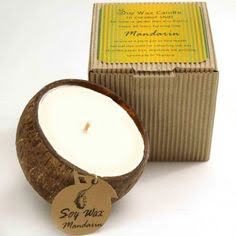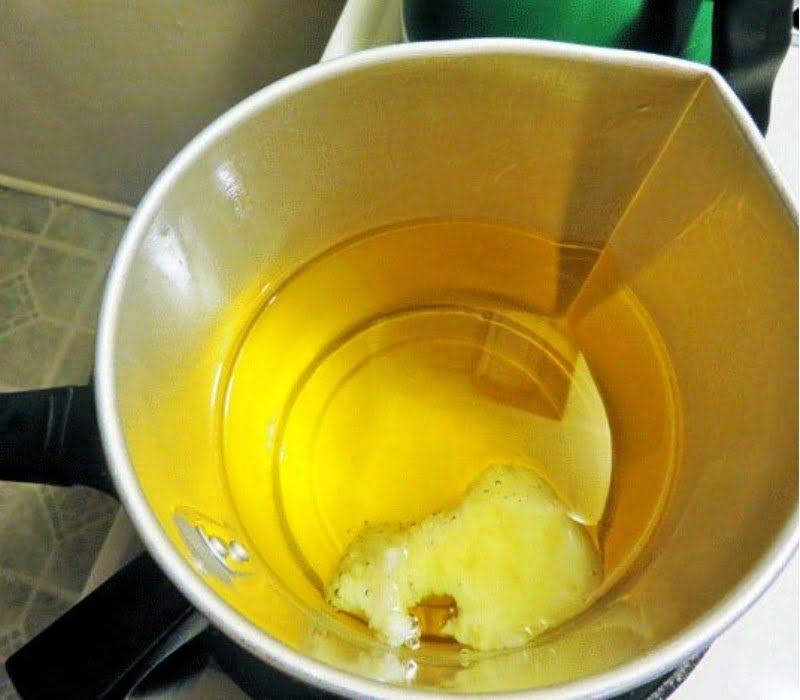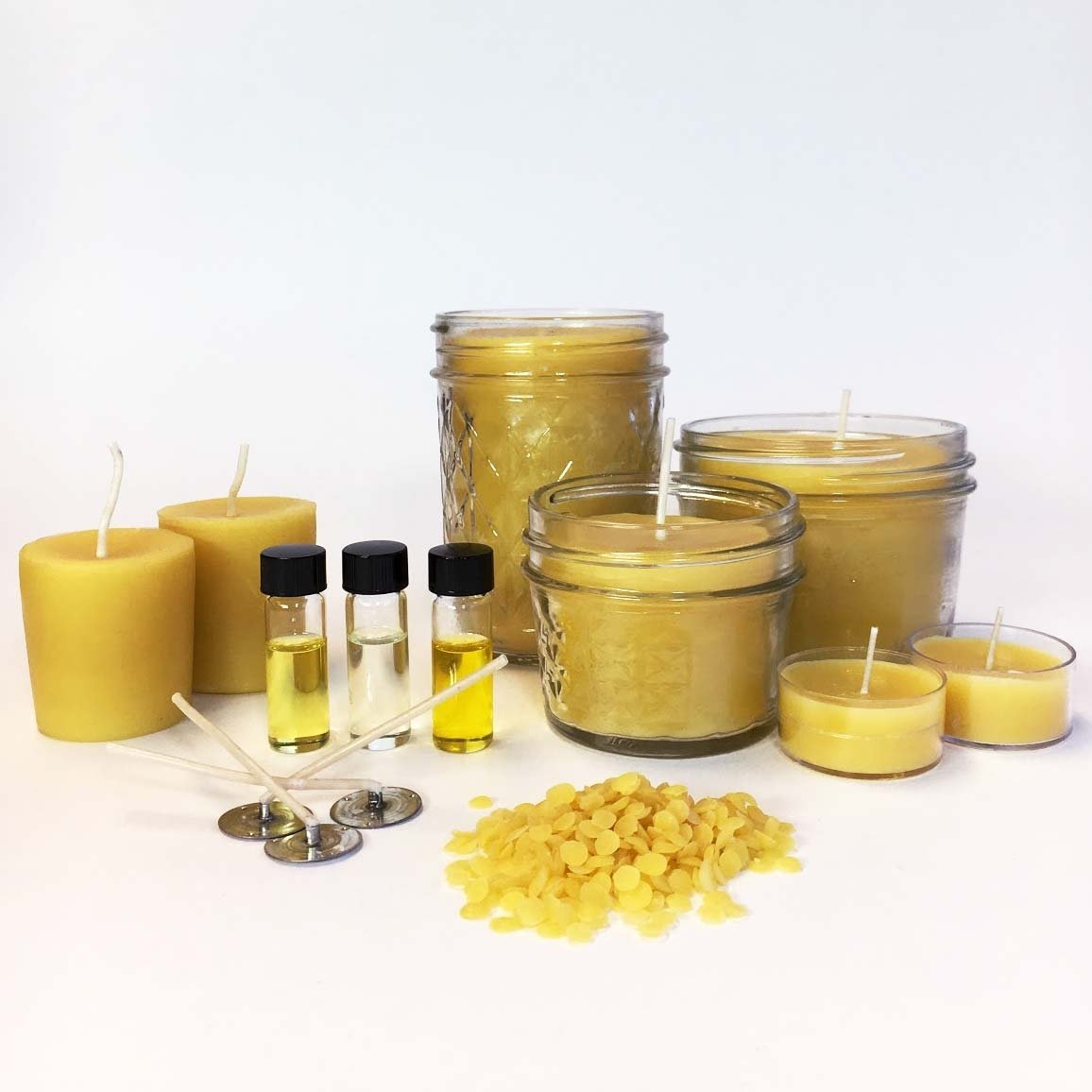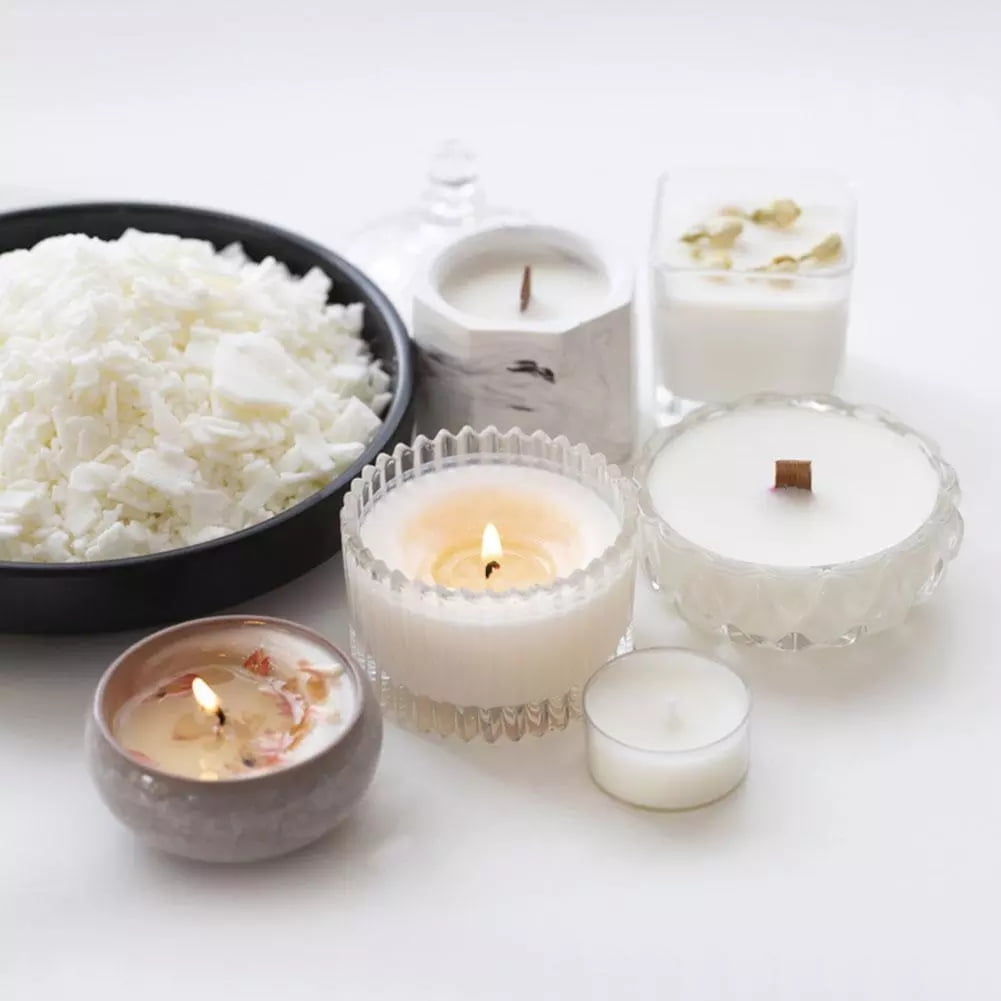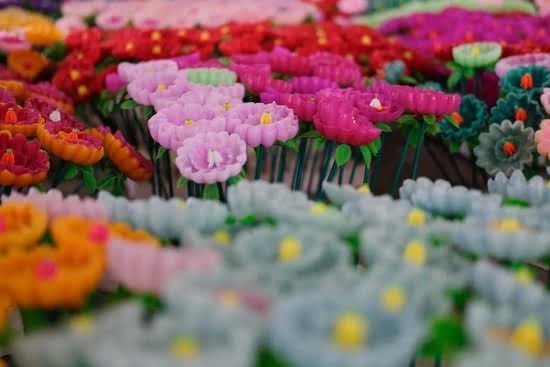The world of candle making has always been filled with beauty, ambiance, and relaxation. However, in recent years, there has been a growing trend in adding essential oils to enhance the aromatic experience of candles. The question arises: can you use any essential oil in candle making? In this article, we will delve into the art of candle making with essential oils, exploring their benefits and compatibility with different waxes.
Essential oils have gained immense popularity for their therapeutic properties and captivating scents. They are highly concentrated aromatic compounds extracted from various parts of plants using methods like steam distillation or cold pressing. These oils are not only used in aromatherapy but also find a special place in the world of candle making.
While synthetic fragrances have long been used in candle making, more and more people are turning to natural alternatives like essential oils. One of the main benefits is that they offer a wide variety of scents that cater to individual preferences. But can you just pick any essential oil off the shelf and use it in your candles?
This article will guide you through everything you need to know about using essential oils in candle making, from understanding extraction methods to blending techniques, safety precautions, and recommended options for different types of candles. So let’s embark on this aromatic journey together and discover the wonders of combining essential oils with candle crafting.
Exploring the World of Essential Oils
Essential oils are highly concentrated plant extracts that have been used for centuries for their aromatic and therapeutic properties. They are obtained through various extraction methods such as steam distillation, cold pressing, and solvent extraction. These oils capture the essence of the plants they are derived from, including their unique fragrances and beneficial compounds.
One of the most popular uses for essential oils is in candle making. When added to candles, these oils can create beautiful scents that enhance the ambiance of any space. However, not all essential oils are suitable for candle making. It is important to choose high-quality, pure essential oils that are compatible with candle wax to ensure optimal results.
When selecting essential oils for candle making, it is crucial to consider their flash points and evaporation rates. Flash point refers to the temperature at which a substance can ignite when exposed to an open flame or spark. Essential oils with low flash points may be more likely to catch fire when used in candles.
Evaporation rate determines how quickly an essential oil will dissipate into the air when heated. Oils with high evaporation rates may not provide a long-lasting scent in candles.
| Essential Oil | Flash Point (°C) | Evaporation Rate |
|---|---|---|
| Lavender | 70 | Medium |
| Peppermint | 60 | Fast |
| Sandalwood | 101 | Slow |
| Orange | 50 | Fast |
It is important to note that this table only provides a few examples, and there are many other essential oils available for candle making. Each essential oil has its own unique characteristics and properties, so it is essential to research and test them before adding them to your candles.
Understanding Candle Making and Fragrance Options
Candle making is a fascinating craft that allows individuals to create their own customized candles with unique fragrance options. When it comes to choosing the right fragrance for your candle, understanding the basics of candle making and the different fragrance options available is essential.
In candle making, there are two main types of fragrances: synthetic fragrances and essential oils. Synthetic fragrances are artificially created scents that often mimic certain smells, such as floral or fruity aromas. On the other hand, essential oils are natural plant extracts obtained through processes like steam distillation or cold-press extraction. They offer a wide range of scents derived directly from botanical sources.
While synthetic fragrances provide a vast array of options, many people prefer using essential oils in their candles because they offer a more natural and therapeutic experience. Essential oils have been used for centuries for their therapeutic properties and can enhance our mood and well-being. For example, lavender essential oil is known for its calming effects, while lemon essential oil can invigorate and uplift our spirits.
When using essential oils in candle making, it’s important to choose high-quality, pure oils to ensure optimal performance and scent diffusion. Look for reputable suppliers that provide detailed information about the origin and extraction method of their essential oils. Avoid oils that are diluted or mixed with additives, as these may affect the burn quality of your candle.
To start incorporating essential oils into your candles, begin by experimenting with small batches and different blends. Some popular essential oil blends for candles include relaxing combinations like lavender and chamomile or invigorating blends like peppermint and eucalyptus. The key is to strike a balance between different scents so that they complement each other rather than overpowering one another.
Remember to use proper blending techniques when creating your fragrance blend by measuring out precise amounts of each oil according to recommended ratios. This will help ensure consistency in scent distribution throughout your candles.
By understanding the basics of candle making and fragrance options, you can unleash your creativity and embrace the aromatic magic of essential oil candles. Whether you prefer calming scents or vibrant and refreshing aromas, incorporating essential oils in your candle making process allows you to create truly unique and personalized candles that enhance the ambience of any space.
Unveiling the Compatibility of Essential Oils and Candle Wax
Importance of Compatibility
When making candles with essential oils, it is crucial to understand the compatibility between the oils and the candle wax. Not all essential oils are suitable for candle making, as certain oils may not blend well with specific types of candle wax.
If the compatibility is not taken into consideration, it can result in a poor scent throw, discoloration, or even cause the candle to burn improperly. Therefore, it is important to select essential oils that are compatible with the chosen candle wax.
Reactivity of Candle Waxes
Different types of candle waxes react differently with various essential oils. For instance, soy wax generally works well with most essential oils due to its porous nature and ability to hold fragrance. Beeswax also blends nicely with many essential oils but has a distinct honey-like scent that may influence or overpower certain fragrances.
On the other hand, paraffin wax has a higher melting point and can be more challenging when it comes to incorporating essential oils. Understanding how each type of wax interacts with different essential oils will help in selecting the appropriate oil for your candle making.
Tips for Choosing Essential Oils
When choosing essential oils for your candles, there are a few tips to keep in mind:
- Opt for high-quality, pure essential oils: Using inferior quality or diluted oils can affect both the scent and performance of your candles.
- Consider fragrance intensity: Some essential oils have a stronger scent than others. It’s important to consider this when determining how strong you want your candle’s aroma to be.
- Keep in mind potential discoloration: Certain essential oils may cause discoloration in your candles over time. If preserving the color is important to you, choose oils that are less likely to cause discoloration.
- Experiment and test: It’s always best to experiment and test different combinations of essential oils and candle waxes to find the perfect blend for your candles. Each oil may react differently with different waxes, so it’s important to explore and find what works best for you.
By understanding the compatibility between essential oils and candle wax, you can create beautifully scented candles that burn evenly and emit a pleasing aroma. Taking the time to research and experiment will allow you to unlock a world of creative possibilities in candle making with essential oils.
The Safety Aspect
Using essential oils in candle making not only adds a delightful fragrance to the candles but also creates a soothing and aromatic environment. However, it is important to consider the safety aspect when using essential oils in candle making, as they can present some potential risks.
One of the main concerns is the flammability of essential oils. Certain essential oils have low flash points, which means they can easily ignite when exposed to heat or an open flame. To ensure safety, it is crucial to choose essential oils with higher flash points when making candles. Some examples of essential oils with higher flash points include lavender, bergamot, and cedarwood.
Evaporation is another safety concern when using essential oils in candle making. Essential oils are volatile substances that naturally evaporate over time, especially when exposed to heat. This evaporation process can lead to changes in the candle’s fragrance throw and longevity. To prevent this, it is recommended to use larger amounts of essential oil in your candle recipe or add the oil towards the end of the cooling process.
To maximize safety when using essential oils in candle making, here are some guidelines and precautions to follow:
- Always use high-quality, pure essential oils that are specifically labeled for candle making.
- Never leave a burning candle unattended.
- Keep candles away from flammable objects and out of reach of children and pets.
- Follow proper wick trimming and burning instructions for optimal safety.
- Perform a small test burn before lighting a newly made candle to ensure proper fragrance diffusion and flame stability.
By taking these safety measures into consideration, you can enjoy the aromatic magic of essential oil candles without compromising on safety. It’s always important to prioritize caution and follow best practices when working with any type of fragrance oil or additive in your candle making endeavors.
Essential Oil Blending for Candle Making
Creating unique fragrance blends is an art form that adds a personal touch to candle making. By blending different essential oils, you can create captivating scents that enhance the ambiance of any space. Here are some tips and techniques for successful essential oil blending in candle making.
- Start with a Plan: Before diving into blending, it’s helpful to have a clear idea of the fragrance profile you want to achieve. Consider the mood or theme you’re aiming for and select essential oils accordingly. Create a fragrance blend recipe with specific ratios of each oil.
- Know Your Essential Oils: Familiarize yourself with the scent profiles and characteristics of different essential oils. Understand their top notes, middle notes, and base notes. This knowledge will help you create well-balanced scent combinations.
- Experiment: Candle making is all about creativity, so don’t be afraid to experiment with different essential oil blends. Mix small amounts of oils in a separate container and test them by sniffing or burning a small sample candle.
- Focus on Compatibility: Ensure that the selected essential oils are compatible with one another in terms of scent composition and intensity. Some oils may overpower others or result in unpleasant combinations when blended together.
- Balance the Notes: When blending essential oils, aim for a harmonious balance between top, middle, and base notes. Top notes provide an initial burst of fragrance, middle notes add body to the scent, and base notes give depth and longevity.
- Proper Blending Techniques: To ensure thorough mixing of essential oils, use a glass dropper or pipette to measure precise quantities for each blend component. Add one drop at a time while stirring gently until you reach your desired blend ratio.
- Allow for Curing Time: After creating your desired essential oil blend for candles, allow it to cure for at least 24 hours before using it in your wax mixture. This will allow the different oils to combine and harmonize their scents.
Creating unique fragrance blends with essential oils is a delightful way to customize your candle-making experience. By following these tips and techniques, you can create beautiful aromas that leave a lasting impression on those who enjoy your candles.
| Blending Tip | Description |
|---|---|
| Start with a Plan | Before diving into blending, it’s helpful to have a clear idea of the fragrance profile you want to achieve. |
| Know Your Essential Oils | Familiarize yourself with the scent profiles and characteristics of different essential oils. |
| Experiment | Candle making is all about creativity, so don’t be afraid to experiment with different essential oil blends. |
Tips and Tricks for Using Essential Oils in Candle Making
Incorporating Essential Oils into Candle Making Processes
When it comes to using essential oils in candle making, there are some practical tips and tricks that can enhance the experience and ensure the best results. Here are some helpful guidelines to consider:
Appropriate Usage Rates and Blending Ratios
To achieve a well-balanced fragrance in your candles, it’s important to use essential oils in the appropriate amounts. Different essential oils have varying strengths, so it’s crucial to follow recommended usage rates. Generally, a safe rule of thumb is to use no more than 6-10% essential oil by weight in your candles.
This ensures that the scent is noticeable but not overwhelming. Additionally, it’s essential to carefully blend different essential oils together to create balanced and harmonious fragrance combinations. Experiment with different ratios until you find the perfect blend for your candle.
Fragrance Throw and Longevity
To maximize the fragrance throw of your candles, consider the wax type you’re using. Soy wax tends to hold onto fragrances better than other wax types like paraffin or beeswax. If you’re using soy wax, you can typically add more essential oil without compromising the quality of the candle.
For other waxes, you may need to adjust your usage rates accordingly. Additionally, curing your candles for at least a week after pouring allows the scent to fully develop and strengthen.
Proper Mixing Techniques
To ensure an even distribution of fragrance throughout your candle, proper mixing techniques are crucial. Whether you’re adding essential oils directly into melted wax or incorporating them into a pre-blended fragrance oil mixture, make sure they are thoroughly incorporated through stirring or shaking. It’s also recommended to pour your candles as soon as possible after adding essential oils because they may evaporate over time.
Additional Considerations for Success
While using essential oils in candle making can be a delightful experience, there are a few additional considerations to keep in mind:
Quality of Essential Oils
To achieve the desired scent and therapeutic benefits, it’s crucial to use high-quality, pure essential oils. Look for oils that are labeled as “essential oil” or “pure essential oil,” preferably sourced from reputable manufacturers. Avoid fragrance oils labeled as “fragrance” or “perfume” oils, as these typically contain synthetic ingredients that may not perform well in candle making.
Temperature Sensitivity
Essential oils are sensitive to heat and can evaporate quickly if exposed to high temperatures for extended periods of time. When adding essential oils to melted wax, it’s important to ensure that the wax has cooled down slightly to avoid potential evaporation.
By following these tips and tricks, you can confidently incorporate essential oils into your candle making processes and create beautifully fragrant candles that enhance any space. Remember to always prioritize the safety guidelines outlined in previous sections and have fun experimenting with different scents and combinations.
Recommended Essential Oils for Candle Making
As candle making with essential oils becomes increasingly popular, it is important to know which essential oils are recommended for this craft. While the choice of essential oils ultimately depends on personal preference and desired fragrance, certain oils have proven to be particularly well-suited for candle making. With their captivating scents and beneficial properties, these recommended essential oils can elevate your candles to a whole new aromatic level.
One highly recommended essential oil for candle making is lavender. Known for its calming and relaxing properties, lavender adds a soothing aroma to any space. Its sweet, floral scent creates a tranquil ambiance that can aid in stress relief and promote better sleep. Lavender works well with various wax types and blends beautifully with other essential oils such as bergamot or cedarwood.
Another popular choice is citrus essential oils like lemon, orange, and grapefruit. These invigorating scents uplift the mood and create a refreshing atmosphere. Citrus essential oils are often used in candles meant for enhancing focus and boosting energy levels. They pair well with soy wax or beeswax and can be combined with mint or eucalyptus for an added burst of freshness.
For those seeking a warm, comforting fragrance, vanilla essential oil is an excellent option. Its rich, sweet scent evokes feelings of coziness and nostalgia. Vanilla complements various candle wax types, especially soy wax and paraffin wax. It can be combined with cinnamon or patchouli for a more complex aroma profile.
When choosing essential oils for candle making, it’s crucial to consider not only the scent but also the quality of the oil. Opting for pure, high-quality essential oils ensures that you achieve the best results in terms of both fragrance throw and overall performance in your candles.
Experimenting with different combinations of recommended essential oils can lead to delightful discoveries in creating unique fragrances for your candles. Whether you prefer floral notes, fruity aromas, or earthy scents, there is an essential oil out there that can help you achieve the perfect blend for your candle making endeavors.
Conclusion
In conclusion, the art of candle making with essential oils offers countless possibilities for creating personalized and aromatic experiences. Throughout this article, we explored the world of essential oils and their importance in candle making. We discussed the compatibility of essential oils with different candle waxes, as well as the safety concerns associated with using them. Furthermore, we delved into essential oil blending techniques and provided practical tips for maximizing fragrance throw and longevity.
It is important to note that while any essential oil can be used in candle making, it is crucial to have a solid understanding of their compatibility with different types of wax. Some essential oils may not mix well with certain waxes or may affect the performance of the candle. By conducting thorough research and following guidelines, one can successfully create unique fragrance combinations using essential oils.
As you embark on your journey into the world of essential oil candles, remember to embrace your creativity and experiment with various scents. The aromatic magic of these candles lies in their ability to evoke emotions and transform spaces. Whether you are looking to relax, invigorate, or create a specific ambiance, there is an essential oil blend out there that will cater to your needs.
So go ahead, explore the incredible world of essential oil candles. Let the fragrances envelop you and create a sense of enchantment in your surroundings. Take pleasure in knowing that every candle you make is a result of your own creativity and personal touch. Embrace the aromatic magic that comes with using essential oils in candle making, and enjoy the journey of creating truly unique handmade candles.
Frequently Asked Questions
What essential oils are safe for candle making?
When it comes to candle making, there are several essential oils that are generally considered safe to use. Some popular choices include lavender, eucalyptus, sweet orange, peppermint, and lemongrass. These oils not only provide pleasant scents but also possess aromatherapy benefits.
However, it’s crucial to follow proper guidelines and use the recommended amount of essential oil for candle making. Additionally, certain essential oils may have specific precautions or sensitivities associated with them, so it’s essential to research each individual oil before using it in candle making.
Are all essential oils safe for candles?
No, not all essential oils are safe for candles. While many essential oils can be used in candle making without any issues, there are some that should be avoided due to their low flash points or potential for causing irritations or sensitivities when burned. Essential oils derived from citrus fruits like lemon or bergamot have a low flash point and can cause the candle to be more flammable than desired.
Essential oils like cinnamon leaf or clove bud can also be irritating when they come into direct contact with the skin. Therefore, it’s crucial to research and select essential oils that are known to be safe for candle making.
Can you use any oil to make candles?
In general, not every oil is suitable for making candles. While some non-essential oils may work in candle making techniques such as using vegetable-based waxes or soy wax melts, traditional candles usually require the use of fragrance specifically designed for candle-making purposes rather than substituting with regular cooking oil or other types of oil you might find at home.
Using improper oils can lead to poor scent throw or even create safety hazards if they have a low flash point and become highly flammable when exposed to heat and flames. It’s important to stick with recommended materials and approved fragrances meant explicitly for candle crafting to ensure the quality and safety of your homemade candles.

Welcome to my candle making blog! In this blog, I will be sharing my tips and tricks for making candles. I will also be sharing some of my favorite recipes.

